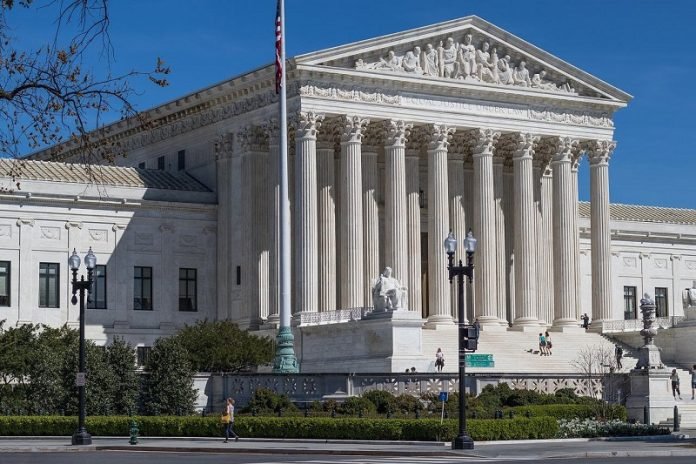
The Supreme Court recently ruled, 6-3, along party lines in favor of a public school football coach who lost his job after kneeling and praying on the field.
The Bremerton School District, when it learned of the prayers, told former assistant coach Joseph Kennedy to stop as it could be seen as a state endorsement of religion.
Justice Neil M. Gorsuch, writing for the majority, characterized Kennedy’s prayers as “brief, quiet, personal religious observance,” arguing that such “private speech” is protected by the First Amendment.
“The Constitution and the best of our traditions counsel mutual respect and tolerance, not censorship and suppression for religious and nonreligious views alike,” Gorsuch said.
The court weighed the right to free speech with the students’ right not to feel pressured into participating in the prayers.
Kennedy’s prayers at the 50-yard line on the field were coercive, according to Justice Sonia Sotomayor, writing for the dissent, who argued that the coach violated the so-called Establishment Clause in the First Amendment.
Indeed, there was evidence that Kennedy pressured students to participate in his circle of prayer—with team members saying that they feared they “wouldn’t get to play as much” if they did not.
Sotomayor noted in her dissent that court precedent “do not require coercion to be explicit, particularly when children are involved.”
The ruling follows another high-profile decision as it relates to the separation of church and state, when the Supreme Court ruled last week that Maine violated the Constitution by refusing to make public funding available to students wishing to attend schools that provide religious instruction.
These decisions threaten to tear down the so-called “wall of separation” between church and state, says Claudia Haupt, associate professor of law and political science at Northeastern.
“Neither of those cases were particularly surprising,” Haupt says. “They fully fit within the more recent trajectory of where the court has been going in interpreting the interplay between the Free Exercise Clause and the Establishment Clause. The strict separation model is over.”
Both clauses are part of the First Amendment—the former working to uphold a person’s right to practice religion and engage in religious rituals, with the latter forbidding government promotion of religion.
Haupt says the conservative majority seemingly ignored the issue of whether the students felt pressured to partake in the prayer, adding “the facts weren’t recited exactly as they occurred.”
They were saying “it was just [Kennedy] praying, and that there was no pressure on the students to participate,” she says. “We know that’s not the case.”
In deciding the way they did, the court “did away with a bunch of precedent … used as tests” to determine where the Free Exercise Clause ends and the Establishment Clause begins.
Under one such test, referred to as the “Lemon” test, governments can only assist religion if “the primary purpose … is secular; the assistance neither promotes nor inhibits religion; and there is no excessive entanglement between church and state,” according to the federal court’s website.
“Today, the Court once again weakens the backstop,” Sotomayor wrote. “It elevates one individual’s interest in personal religious exercise, in the exact time and place of that individual’s choosing, over society’s interest in protecting the separation between church and state, eroding the protections for religious liberty for all.”
Northeastern political science professor William Mayer says he thought the court was “absolutely correct” in the Maine case. Religious affiliation should not disqualify a school, he says, from receiving taxpayer funding if such money is also to be disbursed to private schools.
“I think the courts historically have drawn an overly restrictive line on what individuals can do in terms of the public practice of religion,” he says.
The case of the football coach is more complicated, Mayer says.
“In general just about everybody would acknowledge that if a football coach wants to pray by himself, he should be allowed to do it,” Mayer says. “The question is whether the context in which the prayer occurred was in some way coercive to students who were not inclined to pray.”
Written by Tanner Stening.



